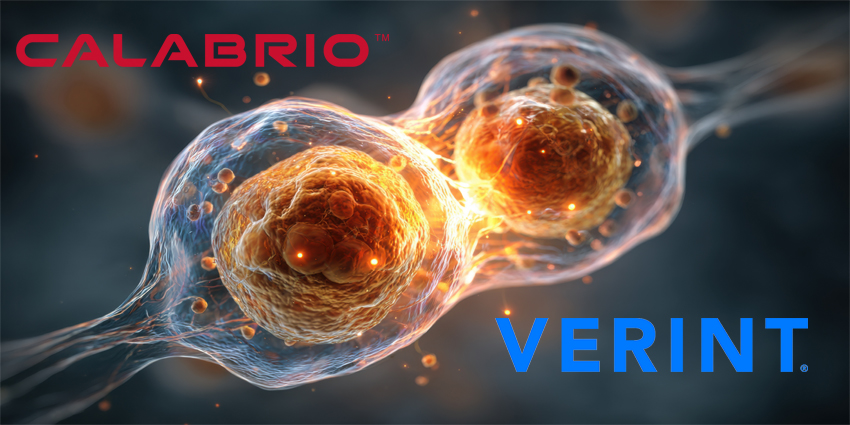NICE is the long-time leader in contact center workforce management (WFM).
According to the DMG Consulting 2024 Workforce Management report, the company has seized 33 percent of the total number of worldwide WFM seats.
In doing so, the company holds 750,000 more seats than its closest competitor.
The analysis matches industry perceptions of NICE as the “gold standard” of WFM.
These perceptions have held firm since long before it switched its primary focus and became a stalwart CCaaS provider.
Nevertheless, as its portfolio has increased, NICE has many more priorities.
Meanwhile, the WFM market hasn’t stood still, with new forecasting models, shift patterns, and AI-driven analytics coming to the fore.
As these trends rise and more CCaaS players jump on the WFM bandwagon, the question arises: is NICE WFM still the gold standard?
NICE WFM Rundown: What’s Included in 2025?
Over the years, WFM solutions have evolved to address new, emerging challenges in the workplace, from the rise of hybrid and remote work to the increasing demand for AI-powered colleagues.
As noted, NICE WFM has retained its position as a market leader, with CCaaS competitors entering the market unable to match the depth of its WFM portfolio.
Indeed, that depth is evident in the following rundown of its differentiative WFM capabilities.
Forecasting
NICE’s Best Pick Forecasting model uses 40+ algorithms, automatically selecting the most accurate one based on historical and real-time data.
The most accurate may change depending on the season or during “what-if scenarios”. NICE WFM accounts for this.
While some competitors may offer more forecasting algorithms, the ability of the platform to automatically select the best model for the specific period is a differentiator.
Why? Because it prevents planners from having to manually test each algorithm on old data to check for accuracy.
Another excellent feature is its True-To-Interval (TTI) analytics. The idea behind this is simple but powerful.
Traditionally, contact centers log contacts in the reporting period they are completed. Yet, TTI logs them in the interval they begin.
As such, resource planners can more accurately see when call volumes lift and drop, increasing forecasting accuracy.
Scheduling
From a scheduling perspective, like many other solutions, NICE WFM presents auto-scheduling features that account for agent preferences.
Agents can also change these preferences, swap shifts, and request time off via a mobile app.
While these scheduling features are advanced, much of NICE’s competition can offer something similar.
Where it differentiates, however, is in its use of AI to automatically detect live staffing shortages or surpluses to redistribute workloads. That leads to intraday management.
Intraday Management
NICE’s real-time adherence monitoring alerts supervisors to potential issues like idle times or unexpected spikes in call volume.
When these spikes occur, planners can execute an automated intraday reforecast to quickly gauge the impact of an incident and act.
Additionally, through the CXone Supervisor Workspace, planners get a full operational view – queue statuses, customer sentiment, and agent performance metrics – so they can make educated decisions to manage the incoming contacts.
Also, as previously noted, NICE WFM automatically detects understaffing and overstaffing issues with AI, provides warnings, and keeps the team on track.
Integrations
WFM data is beneficial beyond the contact center, and there is growing demand to pull it into HR and CRM systems.
Many of the new kids on the blocks may provide good in-house integrations or connections to a specific system, but they’ll be less proven in delivering WFM data across enterprise functions.
Alternatively, NICE WFM integrates data from various sources across the contact center ecosystem. That enables intelligent workforce planning and enhances business insights.
It can work seamlessly with tools like Salesforce, Zendesk, and Microsoft Dynamics.
NICE WFM: The Latest Upgrades
NICE is committed to delivering slow, steady improvements to essential components within its WFM toolkit.
Over the past year, the company introduced two pivotal updates, among smaller additions.
These are the True to Interval (TTI) analytics solution – as highlighted earlier – and upgraded its Inventory Insights tool.
Inventory Insights complements TTI with upgrades to back office functions. It automates backlog forecasting and staffing optimization for teams both in and outside of the contact center.
By unifying front and back-office metrics, NICE enables a holistic workforce plan that fosters both efficiency and better bottom-line results.
NICE vs the Competition
NICE WFM remains a leading tool for conact centers looking to enhance their resource planning operations.
While many new contact center market entrants may put forward new offerings with fresh interfaces, these are typically foundational solutions.
In other words, they lack depth in forecasting algorithms, shift pattern customizations, and analytics.
As such, NICE and its conventional competitors – Calabrio, Peopleware (formerly injixo), and Verint – still lead the way.
Part of the reason here is that advancements in generative and agentic AI haven’t had much of an impact in the WFM space.
Yes, they’ve proved helpful in centralizing data and drawing insights for reviews. However, the nuts and bolts of scheduling and particualy forecasting have gone largely unaffected.
After all, neural networks and machine learning are still the kings of AI in forecasting.
Also, it’s worth noting that NICE can package its WFM solution with quality assurance (QA), coaching, gamification, and learning management tools.
That makes for a deep workforce engagement management (WEM) portfolio.
NICE WFM Review: Still the Gold Standard
NICE’s continued reputation as a leader in WFM comes from more than just its impressive market share.
Indeed, it has earned its place at the top of the pack.
As market entrants – expanding from the CCaaS space – evolve their offerings, it will have to keep one eye over its shoulder.
Nevertheless, ongoing investments in new WFM concepts, innovations to unify front and back-office operations, and a comprehensive WEM portfolio will help NICE prove that it isn’t just resting on a legacy reputation.
Still, it’s striving to raise the bar for what WFM solutions can offer.







